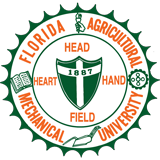

FAMU-FSU College of Engineering  |
United States Environmental Protection Agency (USEPA) is now requiring new CCR landfills, new CCR surface impoundments, and all lateral expansions to be constructed with a composite liner. The composite liner must consist of two components; an upper component consisting of a geomembrane liner (GM), and a lower component consisting of at least a two-foot layer of compacted soil with a hydraulic conductivity of no more than 1 x 10-7 cm/sec. On April 15, 2015, in the preamble to EPA coal ash rule, EPA considered that Florida’s double liner system design may not be appropriate for coal ash landfills and stated, “Florida’s double‐liner system does not meet the level of performance achieved by EPA’s composite liner system or the alternative liner system.”
The new CCR surface impoundments and all lateral expansions of these units should be constructed with a composite liner (see § 257.70). The composite liner must consist of two components; an upper component consisting of a geomembrane liner (GM), and a lower component consisting of at least a two-foot layer of compacted soil with a hydraulic conductivity of no more than 1 x 10-7 (cm/ sec). GM components should consist of high density polyethylene (HDPE) and must be at least 60-mil thick and the GM. The GM or upper liner component must be installed in direct and uniform contact with the compacted soil or lower liner component. Leachate collection and removal systems should be designed to maintain less than a 30-centimeter depth of leachate over the composite liner. A leachate collection and removal system is not required for new CCR surface impoundments because, as previously discussed, a leachate collection system, installed between a single composite liner system, is not practicable and would compromise the integrity of the composite liner system.
Landfills
that incorporate a double-liner system, have an upper primary
geomembrane and a lower secondary geomembrane, separated by a leak
detection system. In 1997, the FDEP presented a paper at the
Geosynthetics ’97 Conference in Long Beach, California entitled
“Evaluating the Performance of Florida Double‐Lined Landfills.” The
double‐lined landfill performance was studied by comparing actual
leachate flow rates into the leak detection system (LDS) at nine of
Florida’s active double‐lined Subtitle D landfills with theoretical
flow rates for these facilities based on their liner designs. The
result was that the primary liners for double-lined landfills were
performing as well as or better than their predicted performance. This
suggested that double liner designs for landfills would be protective
of the environment and supported their use, as EPA had earlier
approved, for Florida’s Subtitle D landfills. FDEP also reported in
1993 the performance of Florida double liner system is superior to that
of the EPA Composite liner (except for one case where the performance
was equal). FDEP publications that are based on measured and
theoretical evaluation, suggested that the potential leakage rate
through the EPA composite liner system could be as much as 50 times as
the Florida liner system.
However, as stated previously, on April 15, 2015, in the
preamble to their coal ash rule, EPA decided, after evaluating only the
soil components of Florida’s double liner design, that this design may
not be appropriate for coal ash landfills. EPA went on to say that
Florida’s double‐liner system “does not meet the level of performance
achieved by EPA’s composite liner system or the alternative liner
system.”
Review the process used by EPA to calculate leakage flow rates through the federal proposed composite liner system and through the Florida Class-I landfill double liner system. We will compare the methodology used by EPA for the CCP to that used for Subtitle D regulations for MSW landfill
Review all previous documentations (FDEP reports, published journal and conference papers) used by the State of Florida to successfully obtain approval for their double liner system as Florida’s Subtitle D alternative. There is a clear contradiction in EPA decision to allow the Florida double-liner system for MSW Landfills and not CCP landfills
Use the findings of first two tasks to recalculate theoretical leakage flow rates through Florida and EPA liner systems to assess if any errors were committed, by not actually comparing the two liner systems, but comparing only theoretical leakage rates through parts of each liner system
We will collect actual leachate flow rates into the leak detection system (LDS) at Florida’s active and closed double‐lined Subtitle D landfills to update the performance and see if liner leakage rate equations should be updated. Where possible, we will revisit the sites the original data was collected.
 |
Tarek Abichou Ph.D. P.E.
Professor Civil & Environmental Engineering Phone Number(s) (850) 410-6661 |
Prashanth Reddy Biyyani
Graduate Student Civil & Environmental Engineering FAMU-FSU college of engineering (850) 640-9596 |
| Report and Meetings |